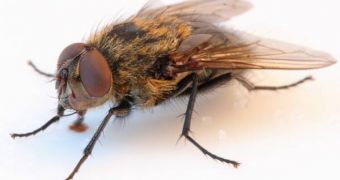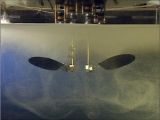While there is no question that fixed winged aircrafts and helicopters will remain the standard for large-scale flying, it may be that creating small flying robots by the “blueprints” of the common flies may be the best way to go in robotics, scientists from the Wageningen University, in the Netherlands, and the California Institute of Technology (Caltech), in the US, believe. In their newest experiments, reported on by AlphaGalileo, they revealed that flapping wings actually consumed half of the energy required to operate a fixed-wing or rotating blade design.
Dutch aerospace engineer David Lentink and Caltech biologist Michael Dickinson teamed up in an attempt to determine how energy was consumed in the two types of powered flight. In a tank filled with oil, they submerged a giant robotic fly and a micro helicopter outfitted with a fly wing. Their goal was to measure how much energy each of the devices consumed in their attempt to stay “in the air.” Careful measurements revealed that the flapping robot consumed 50 percent less energy than its competitor, essentially putting an end to the debate as to which form was more efficient.
Understanding this is very important in the field of miniature robots. Small-scale flying machines could be used for a variety of applications in the future, ranging from spying and mine detection to aiding in rescue efforts underway in very tight spaces. Swarms of such machines could provide rescuers with 3D, composite images of a certain situation, as they would be able to access locations that would otherwise have to be excavated for observations. Additionally, sensors and microfluidic devices could also be placed on them, for an on-the-spot analysis of possible dangerous chemicals in the air.
“Flapping wings waste a lot of energy accelerating the air back and forth. That is why spinning insect wings consume less energy than flapping wings. Engineers have been thinking that fly sized flying machines would have to fly like a fly to be energy efficient,” Lentink says. “With such an effective form of energy storage and motors, flies are much less dependent on energy efficiency than our best robot flies. We can still learn from nature how to improve our flying robot designs, but not without a better understanding of why flies fly so well,” Dickinson adds.

 14 DAY TRIAL //
14 DAY TRIAL // 
